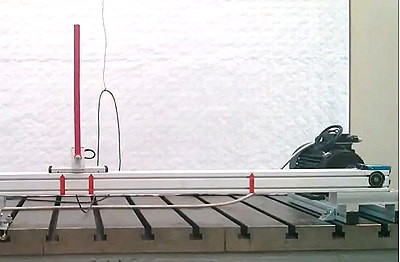- Home » News » Technology News
Sensorless motor control system solves problems with others

A German start-up company is marketing a sensorless technology for determining the position of rotors in electric motors that, it claims, overcomes problems with other sensorless control technologies, such as reduced bandwidths, high noise levels, and difficulties transitioning between high and low speeds. The company, Bitflux, says that these drawbacks have limited sensorless control applications, and made them expensive to develop.
Bitflux is a spinoff from the Technical University of Munich (TUM), which has 20 man-years of research and development expertise in sensorless motor control. Since 2015, the German Ministry of Economics and Energy has been funding the work on the sensorless control of synchronous machines at the TUM’s Institute for Electrical Drive Systems and Power Electronics.
The TUM technology calculates the position of a motor’s rotor from the magnetic anisotropy – the directional dependency of the motor inductances – and therefore avoids the need for position-monitoring hardware such as encoders. It is said to offer considerable cost savings, improved reliability and robustness, and to result in smaller drive systems which avoid the need to use sensors to monitor motor shaft positions.
One problem with existing sensorless control technologies is their complexity which often restricts their use to high-volume applications. Bitflux says that it has been able to combine the usually large number of tuning parameters to produce a sensorless software library, called dynAIMx, which can be applied to any synchronous machine without needing expertise in sensorless technologies. This will make the technology practical and affordable for smaller drives manufacturers.

Another problem for existing technologies is that the high-frequency signals used to calculate inductances produce high-frequency audible noise at low machine speeds. Bitflux says that it has developed several methods to reduce, or even eliminate, this noise, while retaining resolver-like dynamics.
A third problem for existing techniques based on filter or observer structures is that the cleaner and quieter estimated signals are, the more they are delayed. This often means that sensorless control methods that need to operate over a wide speed range are suitable only for applications with low dynamic demands. Bitflux claims that it has developed a method for combining EMF and inductance information, without needing observer or filter structures. This results in wide control bandwidths – similar to those of resolvers – for the entire speed range.
A further limitation of existing sensorless control technologies is that they are not applicable to all machines – each type of machine has to be tested for its suitability. Bitflux says it has overcome this restriction and that it can even control motors that have previously been classified as “non-observable”.
Bitflux, which was set up last year, has acquired technology for the dynAIMx software library from BayPat (Bayerische Patentallianz), the central patent and marketing agency for 28 Bavarian universities, which filed a patent for the technology.





